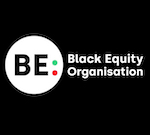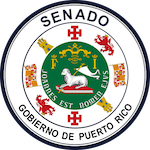 It was once rare that destination marketing organizations and economic development organizations would engage in anything aside from polite conversation. Recent research confirming the value of “place branding,” however, indicates those tides of ambivalence are changing into a sea of campaign and collaboration among DMOs and EDOs joining forces from the city level to a national scale.
It was once rare that destination marketing organizations and economic development organizations would engage in anything aside from polite conversation. Recent research confirming the value of “place branding,” however, indicates those tides of ambivalence are changing into a sea of campaign and collaboration among DMOs and EDOs joining forces from the city level to a national scale.
According to a recent study by Oxford Economics, “Destination Promotion: An Engine of Economic Development,” DMOs and EDOs that align their destination branding efforts are deriving considerable benefit from branding centrally, successfully attracting visitors, talent and investment alike.
It’s not hard to see why. The hospitality and tourism sectors are outperforming all other traded export sectors, and have been doing so since 1998, “represent[ing] a valuable locally-produced export for many regional economies.” As a result, in regions across the country and around the world, tourism exposes thousands of potential investors and skilled talent to locations they may have not otherwise considered as a place to live or do business.
The study found that tourism promotion is a catalyst for raising a destination’s profile; building transportation networks and connecting to new markets; targeting investment attraction through conventions and tradeshows; and raising quality of life, which is invaluable in attracting skilled talent.
Quality of life: attracting visitors, talent
Tourism public relations initiatives strive to bring a place to life, showcasing a destination’s distinctive lifestyle offerings, from arts and culture to the great outdoors, family attractions and world-class cuisine. As it turns out, these quality of life factors are also essential for attracting a skilled workforce. In order to retain and expand business and industry, it’s essential to entice talent — and top talent seeks livable communities with a wealth of amenities. This makes DMOs, which have been telling lifestyle stories for decades to entice travelers, the perfect partner for EDOs looking for this expertise in order to define their lifestyle amenities.
Source Cincinnati is a business attraction group comprising 13 organizations, including the Cincinnati CVB, the chamber of commerce and the area’s regional economic development organization. Initial research showed Cincinnati didn’t have a distinct reputation, so Source Cincinnati was established to undertake a national campaign to create a sense of place. Local businesses are keen on attracting highly skilled talent, so telling lifestyle stories that focus on what makes the city distinctive is crucial for this 15-county area.
Houston’s branding efforts began with a narrow focus on economic development and job creation but has grown into a major image campaign that dives deeply into quality of life messaging. This synergistic effort includes partners such as the Greater Houston Partnership, City of Houston, Greater Houston Chamber of Commerce, Houston First Convention and Visitors Bureau, and regional economic development allies. “Houston First” and “Houston: The City with No Limits” are showing early successes as this fourth largest U.S. city strives to lift Houston’s quality of life image.
The Louisville Convention and Visitors Bureau has been actively promoting tourism to travelers in an effort to recruit top talent to fuel business growth under the banner brand concept “Louisville: It’s Possible Here.” DMO colleagues meet bi-monthly with the mayor’s office, the Louisville economic development office and many other stakeholders such as ball parks, universities and community development officials to determine how they’ll tell the city’s stories. Targeting potential visitors, employee talent and economic development projects, Louisville’s possibility campaign promotes accessibility, openness, friendliness and affordability.
Conventions and trade shows
Successful media relations campaigns targeting consumers have led to further integration in the business-to-business sector.
Competition among destinations for convention business has never been more fierce, and savvy DMOs and EDOs have found great success in joining forces. Collectively, they are pursing conferences that are strategic for exposing potential investors and talent to their city, giving EDOs the opportunity to establish connections with key decision makers.
Raleigh, North Carolina, was leading the country in nearly every measure of economic success, including rankings that are key for recruiting skilled workers. To leverage this position, Greater Raleigh CVB and the Raleigh Convention Center teamed up with Wake County/City of Raleigh Economic Development to market the destination for conventions that would introduce potential skilled workers in the areas of Life Sciences and Biotechnology (third-largest biotechnology cluster in the U.S.) and CleanTech (world’s top 10 CleanTech clusters) to the community. Pursuing what they dubbed “the cerebral trail,” conventions such as the Southeast Alternative Fuels Conference, International Conference on Ecology & Transportation and the CED Life Science Conference were wooed, thus introducing several hundred targeted individuals to Raleigh’s business community.
In the wake of a major company closing, Salinas, California, needed to showcase its assets, including its world-renowned agricultural industry, to the world. Leveraging its strengths in agriculture technology, the City of Salinas partnered with several organizations including the Monterey County CVB to position Salinas as the perfect location for an ag-tech focused summit. The concept proved to be a major win when Forbes agreed to create “Forbes Reinventing America: The AgTech Summit.” This conference will gather 400 of the top leaders and companies at the intersection of technology and agriculture in Salinas this July, helping the city achieve its economic development goals.
Business Events Sydney has taken partnering with the state government’s economic development arm to a whole new level, actually ensuring that a commitment to business events was part of the city’s strategy for economic development as showcased in “Progressing the NSW Economic Development Framework.” Through the development and successful roll-out of a business events ambassador program, which includes leaders who represent the New South Wales government’s priority sectors, Business Events Sydney has secured $22 million in expenditure by confirming such conferences as The World Conference of Dental Traumatology (1,000 delegates), the 12th Congress of the International Society for Organ Donation and Procurement (400 delegates) and the International Bar Association 2017 (4,000 delegates).
This cooperative approach has become so successful that a recent analysis in Skift indicated that several leading international convention bureaus are actually leaning away from tourism-driven marketing strategies, instead working with EDOs and private sector partners to focus on industry expertise.
Oxford Economics reports that “visitor activity is both a consequence of other economic activity (correlation) as well as an important predictive factor (causation) in wider economic development.” So what are the key takeaways for a destination looking to raise its profile among visitors and investors? With either audience, communicating an authentic sense of place is paramount — and ultimately, collaboration is key. DMO/EDO partnerships are the first step to long-term success.
Karyl Leigh Barnes is managing partner of the tourism practice at Development Counsellors International.


 Edelman and rapper Pharrell Williams have launched Mighty Dream as a creative advocacy shop to serve communities of color.
Edelman and rapper Pharrell Williams have launched Mighty Dream as a creative advocacy shop to serve communities of color. WPP plans to launch an investment promotion campaign to spur economic development in war-ravaged Ukraine.
WPP plans to launch an investment promotion campaign to spur economic development in war-ravaged Ukraine. WPP has partnered with the Black Equity Organisation, which launched May 24, to advance equal opportunity and justice for Black people in the UK.
WPP has partnered with the Black Equity Organisation, which launched May 24, to advance equal opportunity and justice for Black people in the UK. The Michigan Economic Development Corp. has selected Finn Partners after a competitive pitch to promote The Wolverine State as a world-class business location and a great place to visit.
The Michigan Economic Development Corp. has selected Finn Partners after a competitive pitch to promote The Wolverine State as a world-class business location and a great place to visit. Prime Policy Group represents Puerto Rico’s Senate as it pushes for a broad range of economic development issues in Washington.
Prime Policy Group represents Puerto Rico’s Senate as it pushes for a broad range of economic development issues in Washington.


 Have a comment? Send it to
Have a comment? Send it to 
No comments have been submitted for this story yet.